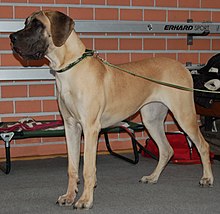
A guardian of the Himalayan foothills, the Tibetan Mastiff is a breed steeped in legend and history. Majestic in presence, this breed boasts a thick double coat, mane-like ruff, and an imposing stature. Traditionally used to protect livestock from predators like leopards and wolves, the Tibetan Mastiff is known for its independence, intelligence, and unwavering loyalty. Though they exude an aura of aloofness, these dogs form deep bonds with their families, making them both protectors and cherished companions.
The Tibetan Mastiff is a member of the AKC Working Group.
Breed Characteristics
| Dog Breed | Tibetan Mastiff |
| Breed Popularity (AKC) | 137 |
| Country of Origin | Tibet |
| Personality | Alert/Responsive |
| Life Expectancy | 10-12 yrs |
| Height | 24-26 in |
| Weight | 70-150 lbs |
| Color | Blue Graym Brown & Tan, Red Gold Sable, Blue Gray & Tan, Black, Black & Tan, Black, Black & Tan, Brown, Red Gold, Cream |
| Coat | Medium, double |
| Shedding | Seasonal |
| Grooming | 2-3 Times a Week Brushing |
| Health Problems | Hip dysplasia, hypothyroidism |
| Trainability | Independent |
| Exercise Needs | Regular Exercise |
Tibetan Mastiff History
Originating from the Himalayas of Tibet, the Tibetan Mastiff is an ancient breed used to guard monasteries and herd livestock. Known for their massive size and thick mane, they were once isolated to the Himalayas but gained global recognition due to their majestic appearance and protective nature.
Temperament
Tibetan Mastiffs are impressive and dignified, known for their guarding instincts. Their intelligence and independence require a patient training approach. Their behavior is protective yet gentle with family. They have a moderate energy level, preferring structured activities. Socialization from an early age is essential for a well-rounded temperament. Their barking tendencies are pronounced, especially during night-time guarding duties.
Remember, while breed traits provide a general idea, individual dogs can have personalities that differ from the breed standard. Always spend time getting to know the dog and ensure their needs and temperament align with your lifestyle.
Grooming Requirements
Tibetan Mastiffs boast a thick double coat that needs frequent brushing, especially during shedding seasons, to manage loose fur. Using a dog shampoo suitable for thick fur during baths ensures optimal coat health. Regular grooming tasks such as nail trimming, ear cleaning, and periodic checks for skin issues are essential.
Tibetan Mastiff Health
Tibetan Mastiffs, having a lifespan of 12-15 years, can experience hip dysplasia and hypothyroidism. Being a larger breed, they might also face bloat. Regular health checks, flea prevention, and vaccinations are essential. Offering a nutritious diet, monitoring for potential allergies, and giving balanced treats can support their health.
Exercise Needs
Tibetan Mastiffs are powerful and independent. Regular walks and play sessions in a secure yard can help expend their energy. Given their protective nature, care should be taken at dog parks or when introducing them to unknown dogs. Bonding through training sessions and controlled play can be beneficial, tapping into their natural guarding instincts.
Training
Originally guardians of Himalayan nomads, Tibetan Mastiffs are majestic and protective. Structured obedience training is crucial to manage their strong-willed nature. Commands, especially for potty training, should be firm. Crate training, although challenging given their size, offers a personal space. Addressing behavior problems, given their territorial nature, early is vital. Socialization ensures they’re gentle giants in family settings.
Tibetan Mastiff Pictures
Related Dog Breeds
More Dog Resources
Are you thinking about getting a puppy? Make sure to check out our list of important questions to ask before you adopt a puppy.
We also have many resources to help, from naming your puppy to socialization resources and training tips.
Take me back to the Ultimate Guide to Dog Breeds



